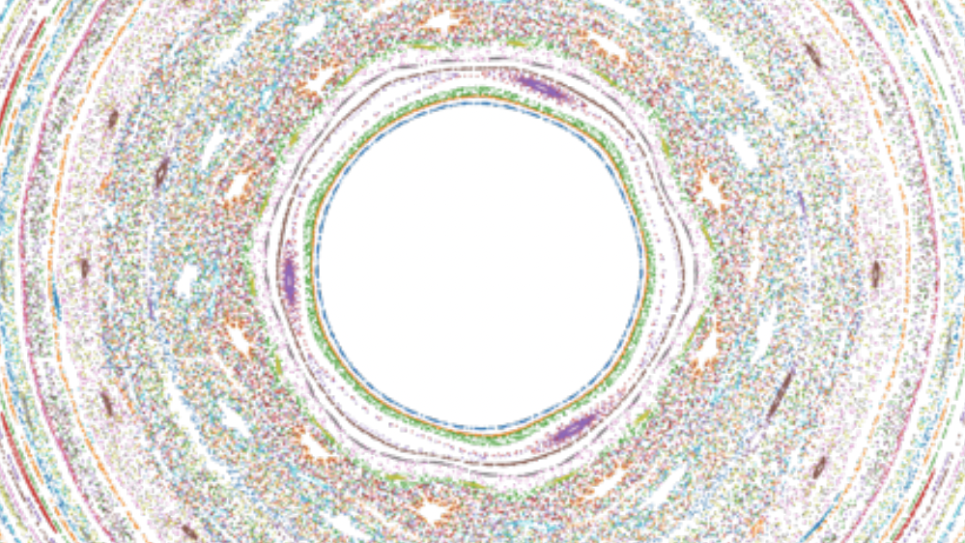
Poincare plot of the magnetic field structure at quasi-saturation, which shows island structures around the mode rational surfaces. Around q=1 surface (inner most island formation area), the m/n=1/1 mode experiences fast periodic crash,
This INCITE project uses use the gyrokinetic particle-in-cell code XGC to study the fundamental edge physics issues critical to the success of ITER and the magnetic fusion energy programs.
This project uses use the gyrokinetic particle-in-cell code XGC to study two fundamental edge physics issues critical to the success of ITER and the magnetic fusion energy programs: (1) understanding and thus promoting innovative ways to achieve the transition from low- to high-confinement mode operation; and (2) a high-enough plasma edge pedestal in the high-mode with a wall heat-flux density below the material limit.
Achieving ITER’s goal of a 10-fold energy gain depends critically on resolving these two issues. The nonlocal, multiscale, nonlinear plasma physics across the open and closed magnetic field geometries, which demand unstructured triangular mesh and neutral particle recycling, make the problem an extremely large one that requires trillions of marker particles for ITER.
Based on previous INCITE allocations, for physics the project will focus on the large-size effect (compared to the ion gyroradius) in the Fusion Power Operation phase (FPO) of ITER and in future magnetic-fusion reactors.